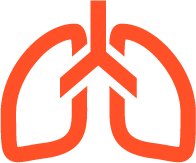Hospital Services
Flexible Bronchoscopy
What
Flexible bronchoscopy (bron-kos’ko-pi) is a visual exam of the breathing passages of the lungs (called “airways”). It is also called airway endoscopy. This test is done when it is important for your doctor to see inside the airways of your lungs, or to get samples of mucus or tissue from the lungs
How
Bronchoscopy involves placing a thin tube-like instrument called a bronchoscope (bron’ko-sko¯p) through the nose or mouth and down into the airways of the lungs. The tube acts as a camera and is able to carry pictures back to a video screen
Why
Infections—When a person is suspected of having a serious infection, bronchoscopy may be performed to get better samples from a particular area of the lung. These samples can be looked at in a lab to try to find out the exact cause of the infection. A person who has recurrent infection may have a bronchoscopy to try to figure out a cause. For example, tissue samples can be looked at for cilia function (brush lining of airways that move mucus). Airway fluid can be checked to see if there are any signs of aspiration due to swallowing problems that allow food or liquids to get into the airways.
Lung spot—An abnormal finding (“spot”) in the lung viewed on an x-ray film or CT scan may be caused by an infection, cancer, or inflammation. Bronchoscopy is done in some cases to take samples from the area. These samples are then looked at in a lab to help find the specific cause of the lung spot.
Airway blockage and Atelectasis—Atelectasis is caused when the airway to a lung or part of a lung is blocked and air cannot get through. The air sacs do not expand which can be seen on chest x-ray. This blockage is usually caused by something such as a peanut, a tumor, or thick mucus in the airway passage. Bronchoscopy allows the doctor to see the blockage and try to sample and/or remove the substance. This helps to open up the airway and lung, especially when lesser invasive treatments (like chest airway clearance) have failed.
Bleeding—When a person has coughed up blood, bronchoscopy may help find the cause of the bleeding. For example, if a tumor is causing the bleeding, the doctor will locate the tumor and take samples of tissue (biopsies) through the bronchoscope. The samples are then looked at in the lab to identify the type of tumor.
Noisy Breathing and Abnormal Airways—A person can have noisy or abnormal breathing sounds that may be caused by a problem with the throat or airways of the lung. There may be shortness of breath, noisy breathing, or labored breathing during sleep. Children may be born with abnormal airways such as a tracheal (windpipe) connection with the esophagus (feeding tube) called a TE fistula. Bronchoscopy allows the doctor to look directly at the throat, vocal cord area, windpipe, and major airways to identify any problems. Causes of this type of breathing may include vocal cord paralysis or weakness, floppiness in the airways (bronchomalacia) or voice box (laryngomalacia), or a blood vessel pressing on the outside of the airway (vascular compression).
Lung Transplant—People who have had lung transplant will have bronchoscopy to check on how well the lungs are doing Samples will be taken of tissue and airway mucus to check



